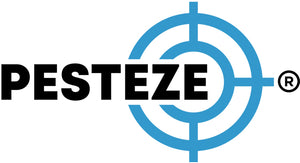RODENT CONTROL TECHNIQUES FOR COMMERCIAL BUILDINGS

RODENT CONTROL TECHNIQUES FOR COMMERCIAL BUILDINGS
SUMMARY
Commercial buildings, from offices to warehouses, are highly vulnerable to rodent infestations due to large spaces, storage areas, and frequent deliveries. Learn the most effective techniques to prevent and control rodents in business environments while maintaining safety and compliance.
FEATURES
-
Comprehensive Inspections: identify entry points and nesting zones.
-
Sanitation Protocols: enforce strict cleaning and waste routines.
-
Sealed Infrastructure: close cracks, ducts, and utility openings.
-
Monitoring Systems: use traps and digital sensors for tracking.
-
Employee Training: promote awareness and reporting of rodent activity.
-
Professional Maintenance: schedule regular pest control assessments.
GUIDE DESCRIPTION
Rodent infestations in commercial buildings can lead to significant financial loss, structural damage, and health violations. Whether it’s an office complex, warehouse, or retail space, these environments provide ideal conditions for rodents if proper preventive measures aren’t in place. Implementing consistent and well-structured control techniques helps ensure the safety, cleanliness, and reputation of your business.
Start with comprehensive inspections. Rodents can infiltrate through small cracks, damaged vents, or utility lines. Inspect basements, loading docks, storage rooms, and drop ceilings for droppings, gnaw marks, or nesting materials. Pay special attention to HVAC ducts, pipe penetrations, and wall voids that offer hidden travel routes between floors.
Effective sanitation protocols form the backbone of rodent control. Regular cleaning schedules should cover both work and storage areas. Keep trash bins sealed and emptied frequently, clean food preparation spaces daily, and ensure employee break rooms remain free of crumbs or spills. Exterior waste areas should also be managed with closed dumpsters placed away from the building’s perimeter.
Infrastructure maintenance plays a critical role in exclusion. Seal all cracks, floor drains, and gaps around pipes or cables using durable materials like steel wool, mesh, or concrete filler. Install weather stripping and door sweeps on all external doors, and maintain loading dock seals to prevent entry during deliveries.
Modern monitoring systems make rodent management more efficient. Combine traditional traps and enclosed bait stations with digital tracking tools that provide real-time alerts of rodent activity. This data-driven approach helps identify hotspots and allows for immediate response before infestations spread.
Employee training is essential in commercial settings. Educate staff on identifying early warning signs such as droppings, odors, or chewed packaging. Encourage prompt reporting and ensure that cleaning supplies and personal food storage are managed properly. Consistent communication between employees and maintenance teams can prevent small issues from becoming large-scale infestations.
Finally, partner with a licensed pest management provider. Professional technicians can perform regular assessments, maintain trap systems, and adapt control strategies as the building’s needs change. They also ensure compliance with safety and sanitation standards required by local regulations.
By combining inspections, sanitation, exclusion, and monitoring, commercial buildings can maintain clean, safe, and rodent-free operations—protecting both employees and customers from potential health and safety hazards.
- Saharsh Bansal


Comments 0